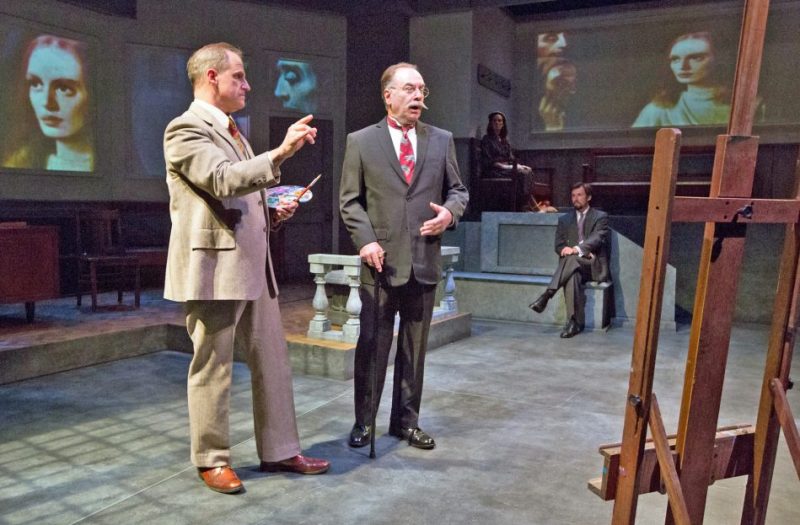
The Craftsman, a play by Bruce Graham. World premiere at the Lantern Theatre, Philadelphia, November 2017.
No previous play by Bruce Graham has the seriousness of his latest, The Craftsman, now in its world premiere at Lantern Theater in Philadelphia.
The prolific Graham has written about murder (Any Given Monday) and suicide (The Outgoing Tide). In The Craftsman, the subject is darker and witty asides are at a minimum. How can anything be darker than murder and suicide, you ask? Collaborating with the Nazis during World War II is my answer.
Graham’s play is set in Amsterdam in May of 1945, immediately after the fall of Nazi Germany. The Dutch citizenry is angry after five years of enemy occupation, and after a particularly desperate winter of starvation. Many Dutch citizens had formed ragtag cells of resistance to their Nazi oppressors, and one such citizen, named Pillel (Ian Merrill Peakes), is the new, provisional head of government. He is anxious to get back at the Nazis and their collaborators for all of their evil deeds.
Han van Meegeren (Anthony Lawton), a 55-year-old Dutch artist, is arrested for selling his nation’s cultural property — a rare Vermeer painting — to the Nazis. This is treason, punishable by death. The story is true, and Graham’s shaping of it grips us. Van Meegeren’s defense is ingenius. He claims that what he sold and delivered to a leading Nazi was a forgery; thus he is not guilty of giving a national treasure to the enemy.
His defense is complicated by the fact that he painted and sold many other forgeries to his own countrymen. He’s willing to go to jail for those felonies, because the punishment is less severe. Another twist is that Holland’s leading art critic, Abraham Bredius (Paul L. Nolan), certified that the painting was a genuine Vermeer; so van Meegeren has to publicly demean and ridicule the pompous Bredius. This gives him great pleasure because Bredius, years before, had dismissed van Meegeren’s original canvases as lacking quality.
Van Meegeren was a real person, a deceitful opportunist whose creativity we reluctantly have to admire, and so was Bredius. Peakes, Lawton and Nolan are superb in their parts, as are Dan Hodge and Brian McCann in supporting roles, although Mary Lee Bednarek as van Meegeren’s wife lacks the enticing, exotic presence that Graham’s script suggests.
Graham includes digs at critics, specifically art experts but tacitly implying theater critics as well. I take this as good-natured, inoffensive ribbing. Pillel undergoes an interesting transformation during the play, and wonders if he is applying his power justly, or is he allowing his hatred to affect his judgement? His fervor for revenge is understandable, and palable.
The ghost of Anne Frank hovers over The Craftsman. This is partly because that young woman personifies the horrors that the Nazis committed, and her story showed the world how some Dutch people (presumably like Pillel) tried to save their Jewish neighbors. And partly because what we see here causes us to question Anne’s assertion that people are basically good.
Meghan Jones’ scenic design spreads the action among distinct areas at a 90-degree angle to each other, illuminating offices, prison cel, home, studio and courtroom. Kayla Speedy designed the fine 1940s costumes. M. Craig Getting directs with suspenseful pace.